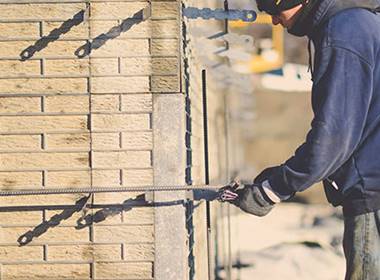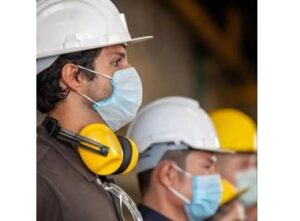 The Concrete Foundations Association (CFA) – the leading organization serving as the voice of cast-in-place contractors – has announced an industry-wide effort to mitigate the pending steel form tie shortage across the North American markets.
The Concrete Foundations Association (CFA) – the leading organization serving as the voice of cast-in-place contractors – has announced an industry-wide effort to mitigate the pending steel form tie shortage across the North American markets.
According to James Baty, executive director of the CFA, the shortage of steel form ties is not only reducing production capacity for contractors, it is also threatening to create a temporary shutdown in construction, which would result in the inability to maintain the high demand of the current record housing market.
What does “form tie shortage” mean?
The term “shortage” is defined as the decreasing availability of supply for this. It can also be defined as any product for the market to purchase and use. The manufacturing of form ties typically lies domestically. However, to meet rising demand and address cost issues, a significant volume of the supply has transitioned to imported ties from China over the last decade.
“This shortage has evolved over the past two quarters into a significant industry issue,” said Baty. “The record level of housing starts in 2020 has combined with significant factors such as purchasing practices, raw material depletion and tariffs on imports as well as the pandemic’s impact on both shipping and manufacturing.”
Forming systems are structurally connected with form ties designed to withstand the fluid pressure of the concrete placement. Aluminum handset systems account for an estimated 70 percent of all residential cast-in-place concrete foundations. This includes crawl spaces and full-height living space basements.
“Form ties are the most essential component of the cast-in-place concrete forming industry. They must be designed to handle the rigorous pressures and permit the rapid construction schedule that has long been an advantage of this method,” said Jason Ells. Ells is the senior vice president for Custom Concrete, a concrete contractor from Westfield, Ind. “We have been feeling the impact of this shortage for several months now. Additionally, we can see that it stretches from raw material and imports through manufacturing and into the marketplace through supply to companies like ours. We have yet to find any relief or projected relief for the situation before it gets even worse.”
Coalition of key industry stakeholders
The CFA has developed a coalition of key industry stakeholders. These stakeholders include the National Association of Home Builders (NAHB). They have had several meetings already this month to gather facts related to the situation. They have also begun identifying plausible solutions. The goal of these meetings was to discern rumor from fact. It was also a goal to prepare the building industry for the impact of the shortage. They would work towards this while also identifying steel industry and possible government assistance.
“CFA is spearheading an unprecedented collaboration effort to offer as many solutions as possible to ensure minimal disruption to the marketplace. They are also working on maintaining quality and worker safety,” states Doug Herbert. Herbert is the president of Herbert Construction in Marietta, Ga. and the current president of the CFA Board of Directors. “Although not all contractors belong to our organization, we serve as advocates for the entire industry.”
Baty noted one of the key concerns is making sure that the shortages is not resulting in short-cuts building process. For example, contractors may opt to use fewer ties in the forms. Others might try alternative tie systems that are not tested nor designed for the loads. Deviating from proven industry methods may compromise the structural integrity of the forming system and put worker safety at risk.
The future
Some additional production is on the table from steel mills committing to increases of the roll stock required to stamp the ties domestically. However, it will likely be the end of second quarter or early third quarter for the market to realize the temporary impact of the increased supply. Likewise, the timing of imported inventory into the U.S. market remains challenged. Additionally, the potential impact will not likely offer much relief until mid-second quarter.
“Future meetings are in the works for updating those with specific interest in monitoring the progress and to continue bringing the right minds together to do what we can to solve this problem,” states Baty. “In addition to our attention on supply, we also are working to educate the marketplace of the safety risks that must be considered when attempting to stretch inventories by reducing tie usage or attempting untested or provisional replacements.”
CFA will be hosting an informational webinar on March 17 to further inform association members of this situation. They will also address recommended steps.
About the CFA
The Concrete Foundations Association of North America is a membership organization. It serves as the leading voice for today’s cast-in-place contractor. www.cfaconcretepros.org.














